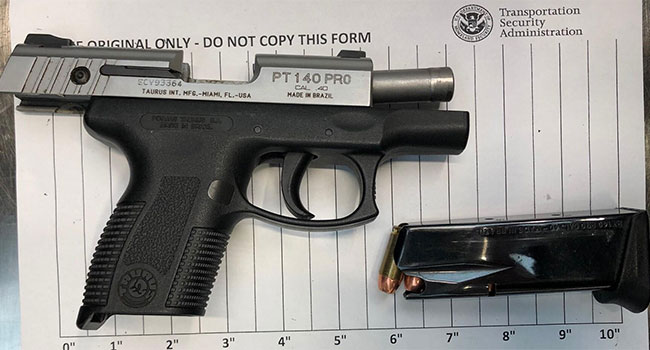
Man cited by police after TSA catches him with loaded gun at Washington Dulles International Airport
TSA officers detected a loaded handgun at one of the checkpoints at Washington Dulles Airport on Sunday. Airline passengers still attempt to bring handguns on board. So far this year, TSA has found four weapons at security check points.
During the past two years, 2019 and 2018, 19 and 17 handguns were detected respectively, at Washington Dulles Airport. At Pittsburgh International Airport, a woman was detected carrying a .22 caliber revolver on May 15. So far this year, TSA agents have found seven weapons at the Pittsburgh security checkpoints.
Passengers are permitted to travel with firearms in checked baggage if they are properly packed and declared. Firearms must be unloaded, packed in a hard-sided case, locked and packed separately from ammunition. Firearm possession laws vary by state and locality.
Nationwide last year, 4,432 firearms were discovered in carry-on bags at checkpoints across the country, averaging about 12.1 firearms per day, approximately a 5% increase nationally in firearm discoveries from the total of 4,239 detected in 2018. Eighty-seven percent of firearms detected at checkpoints last year were loaded.
As a reminder, people who bring firearms to the checkpoint are subject to possible criminal charges from law enforcement. If you’re a TSA Pre✓ member, then you could even lose your status. In addition, TSA has the authority to assess civil penalties for weapons violations. The complete list of penalties is posted online.
TSA has details on how to properly travel with a firearm posted on its website. Airlines may have additional requirements for traveling with firearms and ammunition. Travelers should also contact their airline regarding firearm and ammunition carriage policies.